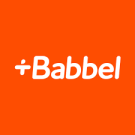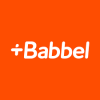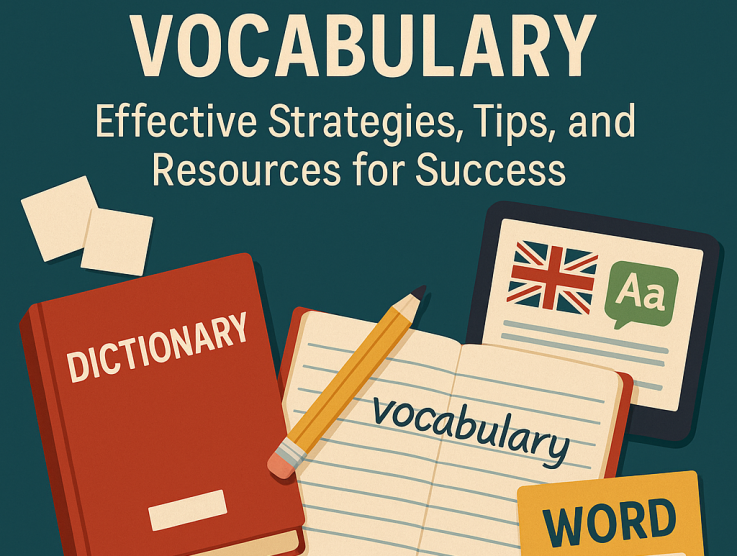Learning a new language can feel daunting, but with the right tools, it becomes an exciting journey. If you’ve been exploring language-learning apps, you’ve probably come across Babbel. Known for its structured lessons and user-friendly design, Babbel promises to make mastering a new language both effective and enjoyable.
- Structured learning: Clear, goal-based progression through real-world topics.
- Strong grammar integration: Lessons include digestible grammar chunks applied in context.
- Spaced repetition system: Helps retain vocabulary and improve long-term memory.
- Interactive exercises: Lessons mix listening, speaking, reading, and writing.
- Speech recognition: Improves pronunciation with real-time feedback.
- Flexible pricing: Subscriptions from $6.95/month with seasonal discounts.
- No lifetime deal: Only monthly/yearly subscriptions; no one-time payment option.
- Limited free tier: Only a sample lesson is free before subscribing.
- Not ideal for advanced learners: Focused more on beginner to intermediate levels.
- No group classes or tutor interaction: Entirely self-paced and app-based.
Learning a new language can feel daunting, but with the right tools, it becomes an exciting journey. If you’ve been exploring language-learning apps, you’ve probably come across Babbel. Known for its structured lessons and user-friendly design, Babbel promises to make mastering a new language both effective and enjoyable.
But is Babbel the right choice for you? In this review, you’ll explore what sets Babbel apart, its features, pros and cons, and how it compares to alternatives—so you can decide if it’s worth your time and investment.
Features of Babbel
Language Courses Offered
Babbel offers courses in 14 languages, from Spanish and French to more niche options like Danish and Indonesian. English learners can expect content tailored for A1–B2 proficiency, organized into real-world themes like travel, work, and everyday conversation.
Learning Methodology
Babbel uses a blended approach, combining grammar, vocabulary, and contextual practice. Lessons begin with essential words and phrases, include grammar explanations in context, and end with speech recognition activities to build pronunciation skills.
Lesson Structure
Each lesson lasts 10–15 minutes, ideal for daily practice. They focus on practical topics (e.g., ordering food, introducing yourself), and progress logically in difficulty—perfect for both beginners and intermediate learners.
Grammar Teaching
One of Babbel’s strengths is simplifying complex grammar. Rather than overwhelming users, grammar is taught through contextual examples and reinforced with interactive exercises like sentence rearrangement and fill-in-the-blanks.
Review System
Babbel uses spaced repetition to reinforce retention. Its review tool resurfaces learned words and concepts at optimal intervals, allowing learners to revisit weak areas before advancing.
App Design and Accessibility
Available on iOS, Android, and web, Babbel’s clean, modern interface syncs your lessons across devices. You can download lessons for offline access—perfect for on-the-go learners.
Advantages of Babbel
- Structured learning: Clear, goal-based progression through real-world topics.
- Strong grammar integration: Lessons include digestible grammar chunks applied in context.
- Spaced repetition system: Helps retain vocabulary and improve long-term memory.
- Interactive exercises: Lessons mix listening, speaking, reading, and writing.
- Speech recognition: Improves pronunciation with real-time feedback.
- Flexible pricing: Subscriptions from $6.95/month with seasonal discounts.
Disadvantages of Babbel
- No lifetime deal: Only monthly/yearly subscriptions; no one-time payment option.
- Limited free tier: Only a sample lesson is free before subscribing.
- Not ideal for advanced learners: Focused more on beginner to intermediate levels.
- No group classes or tutor interaction: Entirely self-paced and app-based.
Pricing Plans
| Plan Duration | Cost (Approx.) |
|---|---|
| 1 Month | $14.95 |
| 3 Months | $12.65/month |
| 6 Months | $11.15/month |
| 12 Months | $7.45/month |
Babbel regularly offers seasonal discounts, with promotions like 50% off for new users. While there’s no lifetime option, the pricing remains competitive for the value it offers.
User Experience
Ease of Use
Babbel’s interface is minimalist and intuitive. You can track lesson progress, review history, and navigate between modules effortlessly. Setup is quick, with a brief onboarding flow to select goals, level, and daily commitment.
Engagement
Lessons are interactive, mixing speech recognition, dialogues, grammar tips, and fill-ins. Real-world scenarios keep the learning grounded and applicable. Gamified elements like streaks add motivation.
Beginner & Intermediate Suitability
Babbel excels at guiding new learners through structured lessons while offering enough depth for intermediate users to grow their grammar and vocabulary skills.
Hands-On Experience
A typical Babbel lesson introduces vocabulary, explains grammar, and reinforces both through varied tasks. Speech recognition helps with pronunciation, and the app adapts review content based on your performance. Learning feels practical, focused, and efficient.
Comparison with Other Platforms
| Platform | Strengths | Drawbacks |
|---|---|---|
| Babbel | Structured lessons, grammar focus, SRS | No lifetime deal, limited free content |
| Duolingo | Gamified, free access | Weak on grammar and real-world conversation |
| Rosetta Stone | Immersive method, long-standing brand | Expensive, less practical for English |
| italki | 1-on-1 live tutors, flexible pricing | No structured curriculum, tutor variability |
Final Verdict
Babbel is a reliable, well-structured, and practical tool for learning English or any of its 14 supported languages. It’s ideal for learners who appreciate grammar guidance, short lessons, and self-paced study. Though it lacks live tutor support and lifetime access, its overall value is high—especially during promotional periods.





